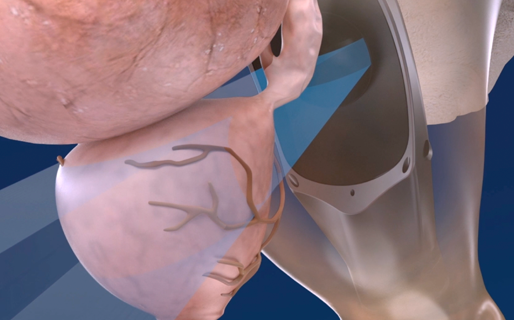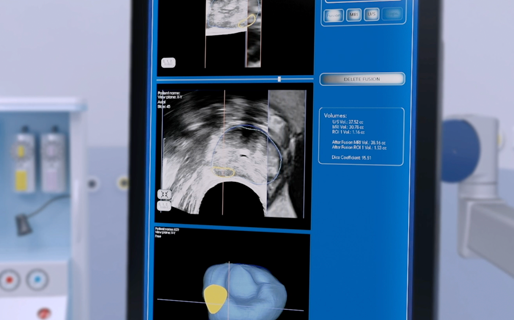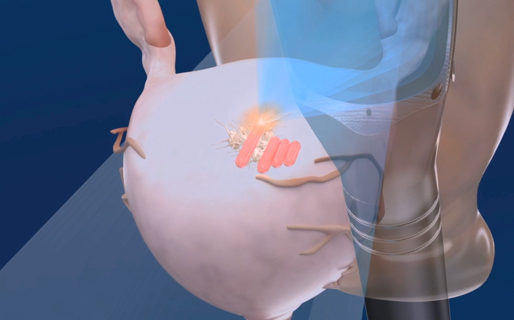Focal One® - HIFU Technology
Understanding HIFU
Focal One combines the latest imaging and high-intensity focused ultrasound (HIFU) technology to precisely contour and ablate the targeted lesion while avoiding critical structures. To us, precision matters.
Focused Ultrasound
(HIFU)
The Focal One® HIFU Robotic System uses high-performance imaging, and HIFU technology allows the Urologist to precisely target the prostate with submillimetric accuracy while sparing healthy surrounding tissue and preserving patients’ quality of life.
What is High Intensity Focused Ultrasound (HIFU)?
HIFU stands for High Intensity Focused Ultrasound. HIFU is a non-invasive way to target prostate tissue. This technology ablates prostate tissue by focusing high-intensity ultrasound waves on the affected area, causing localized heating that destroys the cells in the gland leaving the surrounding healthy tissue unharmed. Focused ultrasound works similarly to how a magnifying glass concentrates sunlight at a single point, generating heat without affecting the surrounding area.
How HIFU Works
HIFU works by delivering high-intensity sound waves directly to the targeted area of the prostate. The Focal One® Robotic HIFU system uses an ultrasound probe to deliver the high-intensity sound waves at the precise point. This process, known as focal therapy, involves ablation, which is when focused energy raises the temperature and destroys the cells in the treatment area, without harming the healthy tissue around it. With the advanced imaging and robotic precision of Focal One, this treatment ensures that only the targeted area is treated, minimizing side effects and protecting quality of life.

Focal One HIFU Procedure Steps - How a Treatment works
Imaging

The whole prostate is scanned by the transrectal ultrasound imaging probe and displayed on the Focal One screen as a three-dimensional reconstruction of the area to be ablated.
Planning

On the screen, the urologist plans each step of the procedure, precisely targeting the area to be ablated.
Energy Delivery

Finally, the system automatically determines the optimal number of lesions based on the planning and produces High Intensity Focused Ultrasound waves to destroy the targeted cells.
Clinical Follow-up
What happens after the procedure?
At the end of the procedure, a temporary urinary catheter will be placed in order to limit the risk of urinary retention due to the temporary swelling. This catheter can be removed at the first follow-up visit. Typical follow-up will include PSA testing at three months, six months, and one year, to evaluate the result. This follow-up can be performed by the treating urologist, or, if you traveled from a remote location, your local urologist.
The benefits of HIFU
HIFU provides an effective way to treat only the affected part of your prostate, preserving your overall quality of life. There is a large body of clinical evidence showing promising cancer control. Watch Dr. Lance Willsey discuss the benefits of targeted, precise Prostate ablation with HIFU which can offer the best outcomes for both Physician and Patient. HIFU allows the Physician to preserve a Patient’s quality of life. Patients maintain their continence and preservation of sexual function following HIFU treatment.
Why Choose HIFU?
Focal One Robotic HIFU is a non-invasive option that allows you to return to normal activities sooner. For Prostate Cancer patients, this procedure requires no surgery, no incisions, and no radiation by the ability to ablate just the diseased part of the prostate for the optimal preservation of quality of life. This latest HIFU medical device is dedicated to focal therapy. The real-time imaging allows for precise local ablation in one session under general anesthesia, repeatable if necessary, with a low risk of side effects.
- Non-invasive Procedure: No blade surgery, no scar, no radiation or incision
- Low Risk of Side Effects: Lower changes of issues such as incontinence and erectile dysfunction
- Quality of Life Preservation: Quick recovery with minimal time away from work and leisure activities
Focal One Winning The Race Against Prostate Cancer

